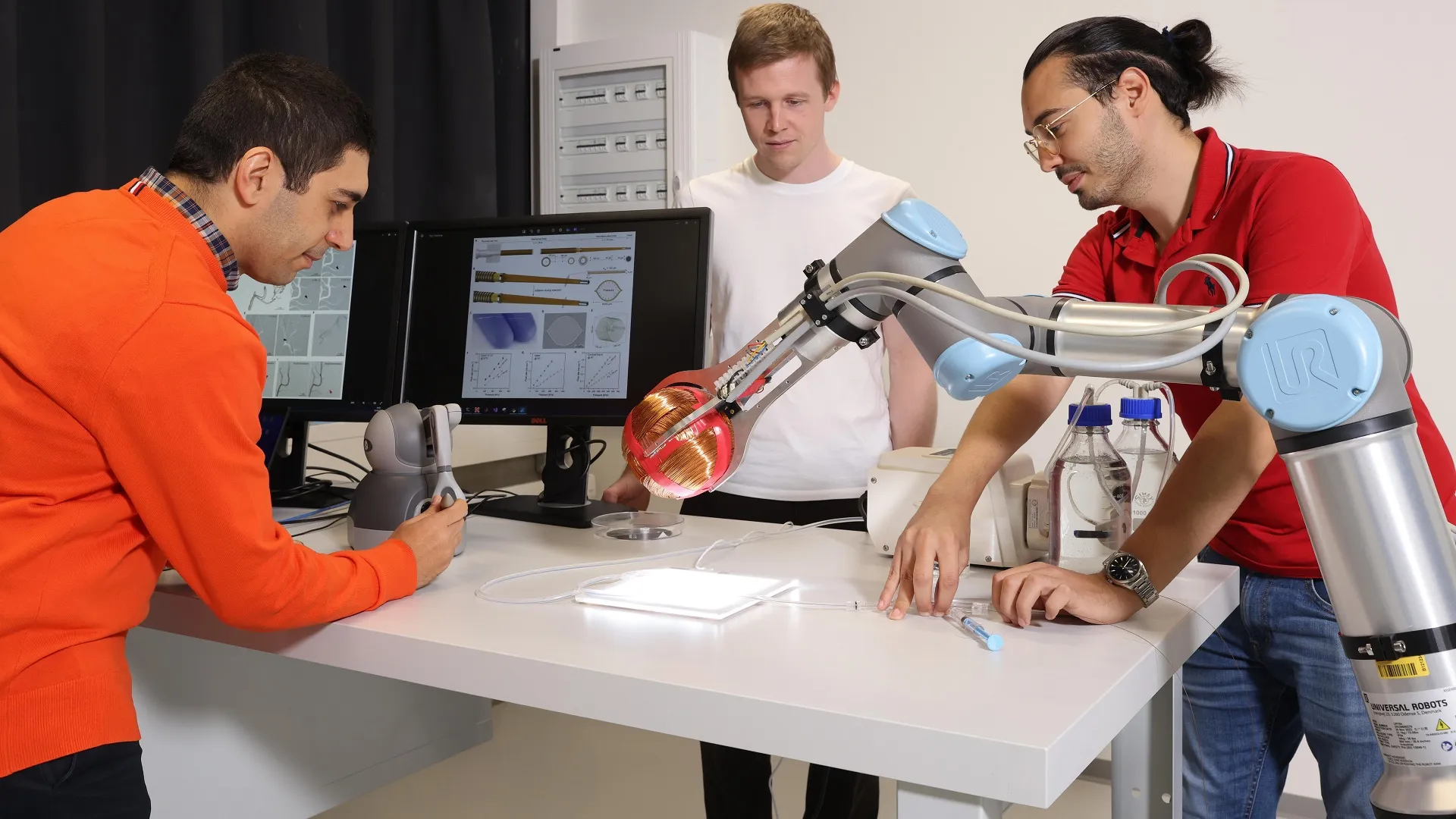Copyright Interesting Engineering

In a medical robotics breakthrough, scientists at the Swiss Federal Institute of Technology Lausanne (EPFL) have built a new kind of microcatheter that can hitch a ride on the bloodstream to navigate the body’s narrowest arteries, even thinner than a human hair. Microcatheters are already critical for lifesaving procedures such as clearing clogged arteries, stopping bleeding, or delivering drugs directly to tumors. But existing guidewire-based systems are slow, difficult to steer, and can damage vessel walls — and they can’t reach the smallest, most tortuous vessels deep within the brain. To overcome these limitations, researchers have developed MagFlow, an ultraminiaturized magnetic microcatheter that uses the flow of blood itself to move forward. The innovation could open new possibilities in treating conditions like stroke, arteriovenous malformations, and even eye cancers in children. Selman Sakar, head of EPFL’s MicroBioRobotic Systems Laboratory, said, “Catheters eliminate concerns about device removal after use, and don’t have limited payloads. At the same time, many blood vessels lie beyond a traditional catheter’s reach.” “ That’s why we have developed and tested MagFlow: an ultraminiaturized magnetic microcatheter – twice as small as benchmark microcatheters – that minimizes contact with vessel walls by hitching a ride on the blood stream’s own kinetic energy.” Flow guides precision The MagFlow concept was first introduced in 2020 as a flat, ribbon-like polymer device with a magnetic tip. In its latest iteration, developed in collaboration with interventional neuroradiologist Pascal Mosimann from Toronto Western Hospital, the design has evolved into a fully functional microcatheter. Two bonded polymer sheets form a flexible body that can inflate “like a fireman’s hose” to deliver liquids ranging from thin contrast agents to viscous embolizing materials. To steer the device, EPFL engineers built a robotic control system called OmniMag. The setup uses a magnetic field generator mounted on a robotic arm, guided by a doctor’s hand movements on a stylus. The system automatically calculates the magnetic field orientation needed to direct MagFlow’s magnetic tip, a crucial step toward precise, minimally invasive navigation inside the body. “We are very excited about this patented technology and want to push it further – we are in the process of launching a startup venture,” Sakar said. Tiny tech, vast reach In animal experiments conducted at a research facility in Paris, the team successfully guided MagFlow through the intricate arteries of pigs’ heads, necks, and spines, safely delivering contrast and embolizing agents to highly curved and narrow vessels. “Our experimental results elevate the flow-driven navigation concept into a viable clinical solution that can ultimately unlock new treatment avenues for cardiovascular conditions,” said Lucio Pancaldi, co-developer and recent EPFL graduate. The team is now collaborating with clinicians at Lausanne University Hospital and Jules Gonin Eye Hospital to adapt MagFlow for retinoblastoma therapy. They’re also exploring neurological uses, including developing microelectrodes that could map seizure activity by navigating blood vessels to the brain.



